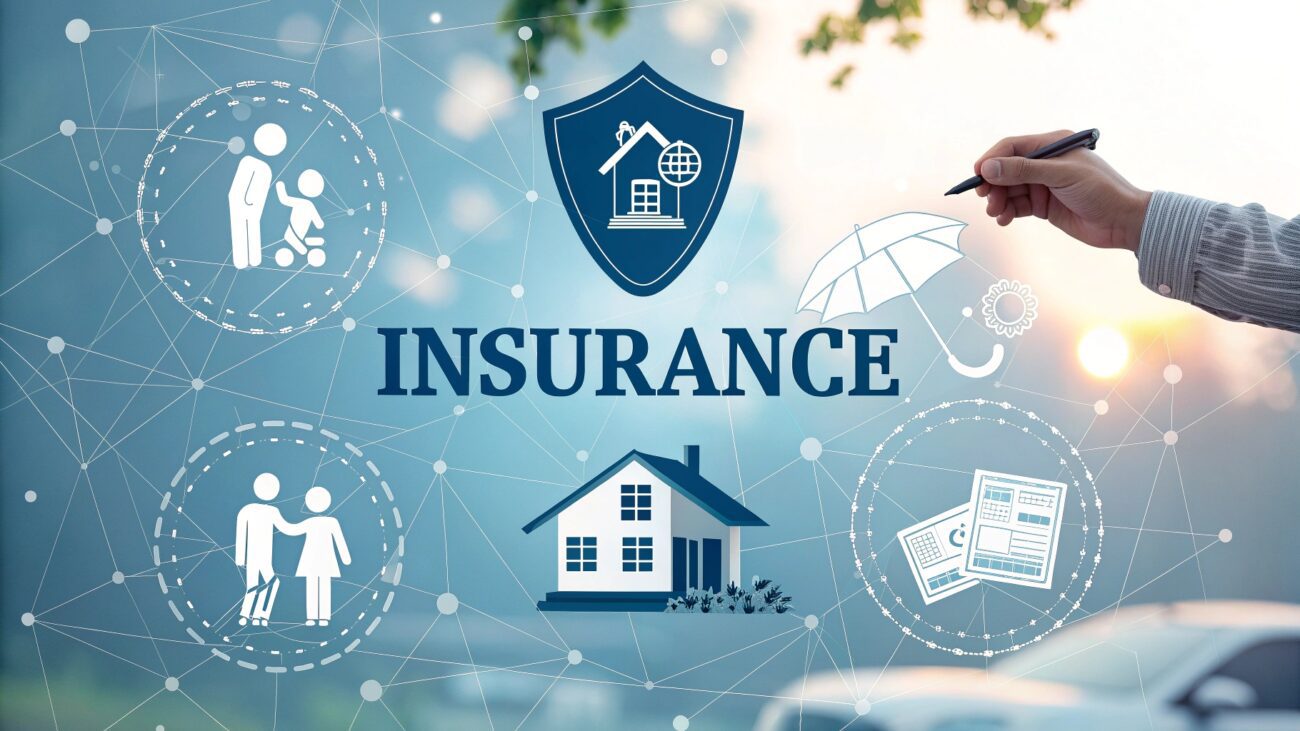Your home is more than just a roof over your head — it’s likely your biggest financial investment. Whether you’re a first-time homeowner or have owned property for years, understanding how to protect it is essential. That’s where homeowners insurance comes in. This guide will walk you through everything you need to know about home insurance coverage, benefits, and smart ways to save.
What Is Homeowners Insurance?
Homeowners insurance is a financial safety net that protects you from unexpected losses or damages related to your home and personal property. It helps cover costs if your house is damaged by fire, theft, storms, or other covered events — and can also protect you from liability if someone gets injured on your property.
In short, it ensures that one accident or disaster doesn’t destroy your financial stability.
Why Homeowners Insurance Matters
Imagine your roof collapsing during a storm or a kitchen fire spreading faster than expected. Without insurance, the repair or rebuilding costs could be devastating. Homeowners insurance gives you peace of mind by protecting your home, belongings, and financial future.
- Financial protection: Covers repairs or replacement costs for your home and belongings.
- Liability coverage: Protects you if someone is injured on your property or if you accidentally damage someone else’s property.
- Lender requirement: Most mortgage lenders require homeowners insurance before approving your loan.
- Peace of mind: You can live comfortably knowing your investment is secure.
What Does Homeowners Insurance Cover?
While every policy is unique, most standard homeowners insurance plans include these key coverage areas:
1. Dwelling Coverage
This covers the structure of your home — including walls, roof, floors, and built-in appliances — if they’re damaged by covered events such as fire, hail, or vandalism.
2. Personal Property Coverage
Your belongings matter, too. This part of the policy helps replace furniture, electronics, clothing, and other personal items damaged or stolen in a covered incident.
3. Liability Protection
If a guest is injured on your property or if you accidentally cause property damage, liability coverage helps cover medical expenses, legal fees, and potential settlements.
4. Additional Living Expenses (ALE)
If your home becomes uninhabitable due to a covered event, ALE helps pay for temporary living costs like hotel stays, meals, and rent while repairs are made.
5. Other Structures Coverage
Detached structures such as garages, fences, and sheds are also covered under most homeowners policies.
Common Events Covered by Homeowners Insurance
- Fire and smoke damage
- Windstorms and hail
- Theft or vandalism
- Water damage from plumbing leaks
- Lightning strikes
- Falling objects (like trees or debris)
However, it’s important to note that floods and earthquakes are usually not included in standard homeowners insurance policies. You may need separate policies for these risks, depending on your location.
What’s Not Covered?
To avoid unpleasant surprises, always read the fine print of your policy. Common exclusions include:
- Flood damage (requires separate flood insurance)
- Earthquake damage (requires separate coverage)
- Normal wear and tear or maintenance issues
- Pest infestations
- Damage from war or nuclear events
How Much Does Homeowners Insurance Cost?
The average annual premium for homeowners insurance in the U.S. ranges between $1,300 and $2,000, depending on several factors such as:
- Home value and age
- Location and local risks (fire, flood, theft)
- Coverage limits and deductible amount
- Credit score and claims history
For example, a home in a hurricane-prone coastal area will typically cost more to insure than one in a low-risk inland region.
Tips to Save on Homeowners Insurance
Protecting your home doesn’t have to break the bank. Here are a few practical tips to reduce your premiums while maintaining solid coverage:
1. Shop Around and Compare Quotes
Get quotes from multiple insurers before making a decision. Even a small price difference can add up to hundreds of dollars in annual savings.
2. Increase Your Deductible
Choosing a higher deductible (the amount you pay before insurance kicks in) can lower your monthly premium. Just make sure it’s an amount you can afford out of pocket.
3. Bundle Policies
Many companies offer discounts when you bundle home and auto insurance. It’s one of the easiest ways to save while simplifying your billing and management.
4. Improve Home Security
Installing smoke detectors, security cameras, or alarm systems can reduce your risk of damage or theft—and may qualify you for policy discounts.
5. Maintain a Good Credit Score
Insurers often consider your credit score when calculating premiums. Keeping your credit in good standing can lead to better insurance rates.
Choosing the Right Homeowners Insurance Policy
Not all homes—or homeowners—are the same. The right policy depends on your property’s value, location, and your personal comfort level with risk. When comparing options, consider the following:
- Coverage limits that match your home’s full replacement value
- Reputation and financial stability of the insurer
- Customer service and claim response ratings
- Availability of add-ons like flood or earthquake coverage
Why Reviewing Your Policy Annually Is Crucial
Your coverage needs may change over time. Major life events—like renovations, new valuables, or increased property values—should prompt a policy review. Adjusting your coverage ensures you’re never underinsured when disaster strikes.
Final Thoughts
Your home is one of your most valuable assets. Having the right homeowners insurance ensures that your investment—and your peace of mind—are protected from life’s unexpected turns. By understanding your policy, comparing coverage options, and taking advantage of discounts, you can secure the protection you need without overspending.
